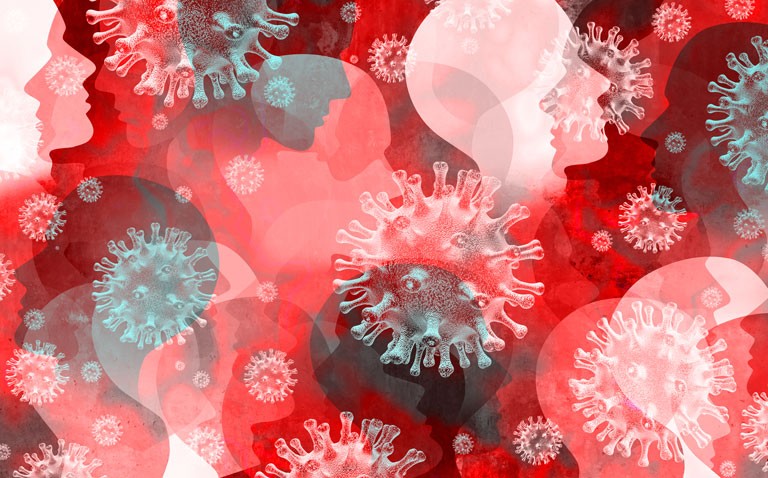While nasopharyngeal swab testing has become an established standard, self-testing for COVID-19 with saliva samples represents a more convenient method although the accuracy compared to nasopharyngeal testing is uncertain
The use of mass testing for COVID-19 helps with case identification within the community. The most commonly used method relies on nucleic acid amplification testing (NAAT) of samples obtained from nasopharyngeal swabs and has become widespread across the world. However, nasopharyngeal testing requires some degree of training with a specially designed swab and whether wider self-testing using the method could be reliably undertaken by the general public is unclear. Greater self-testing would enable the screening of a much large number of people and one potential self-administered method involves the use of saliva-based NAAT although the accuracy of this method is currently unclear. In an attempt to summarise the available data on the accuracy of saliva-based NAATs, a team from the Royal Victoria Hospital, Montreal, Canada, performed a systemic review and meta-analysis of the operating characteristics of saliva methods for the detection of COVID-19 compared to nasopharyngeal swabs. The team searched all available databases and pre-publication servers such as MedRxiv, excluding studies with less than 20 patients and pooled assay sensitivities and specificities from the studies.
Findings
A total of 16 studies with usable data were included in the meta-analysis. Together these studies involved the collection of 5922 samples, of which, 941 had a positive result by saliva and nasopharyngeal NAAT or both and 4981 with a negative result. Pooling data from the studies provided an estimate for the saliva-based method sensitivity of 83.2% (95% CI 77.4 – 91.4%) and a pooled specificity of 99.2% (95% CI 98.2 – 99.8%). Similarly, the pooled sensitivity for the nasopharyngeal test was 84.8% (95% CI 76.8 – 92.4%) and specificity was 98.9% (95% CI 97.4 – 99.8%). Commenting on their findings, the authors suggested that given the similar sensitivities and specificities, testing centres should consider wider use of the saliva-based NAAT, especially because it is much easier to procure samples and more comfortable for patients. Nevertheless, a recognised limitation of their analysis was that most studies did not provide details on patient symptoms and it was therefore unclear whether or not a particular clinical syndrome would require a specific sampling method. For example, if a patient had respiratory symptoms would a nasopharyngeal NAAT be more accurate than a saliva test? Although the authors could not be certain, they speculated that such differences might account for the wide confidence intervals obtained in their analysis.
They concluded that given the comparable sensitivity and specificity, saliva-based NAAT should be prioritised for large scale deployment in prospective studies.
Citation
Butler-Laporte G et al. Comparison of saliva and nasopharyngeal swab nucleic acid amplification testing for detection of SARS-CoV-2. A systematic review and meta-analysis. JAMA Int Med 2021










